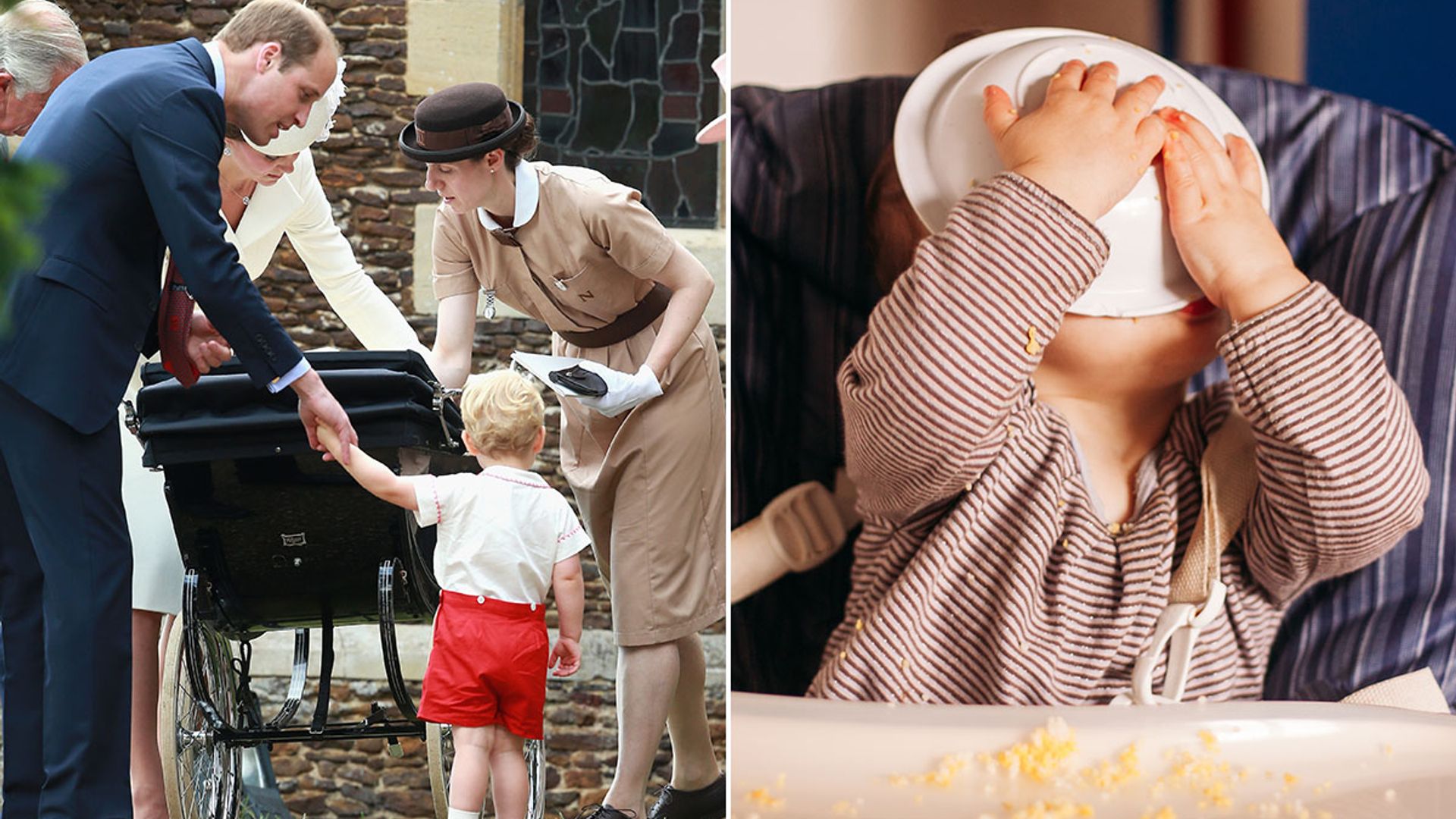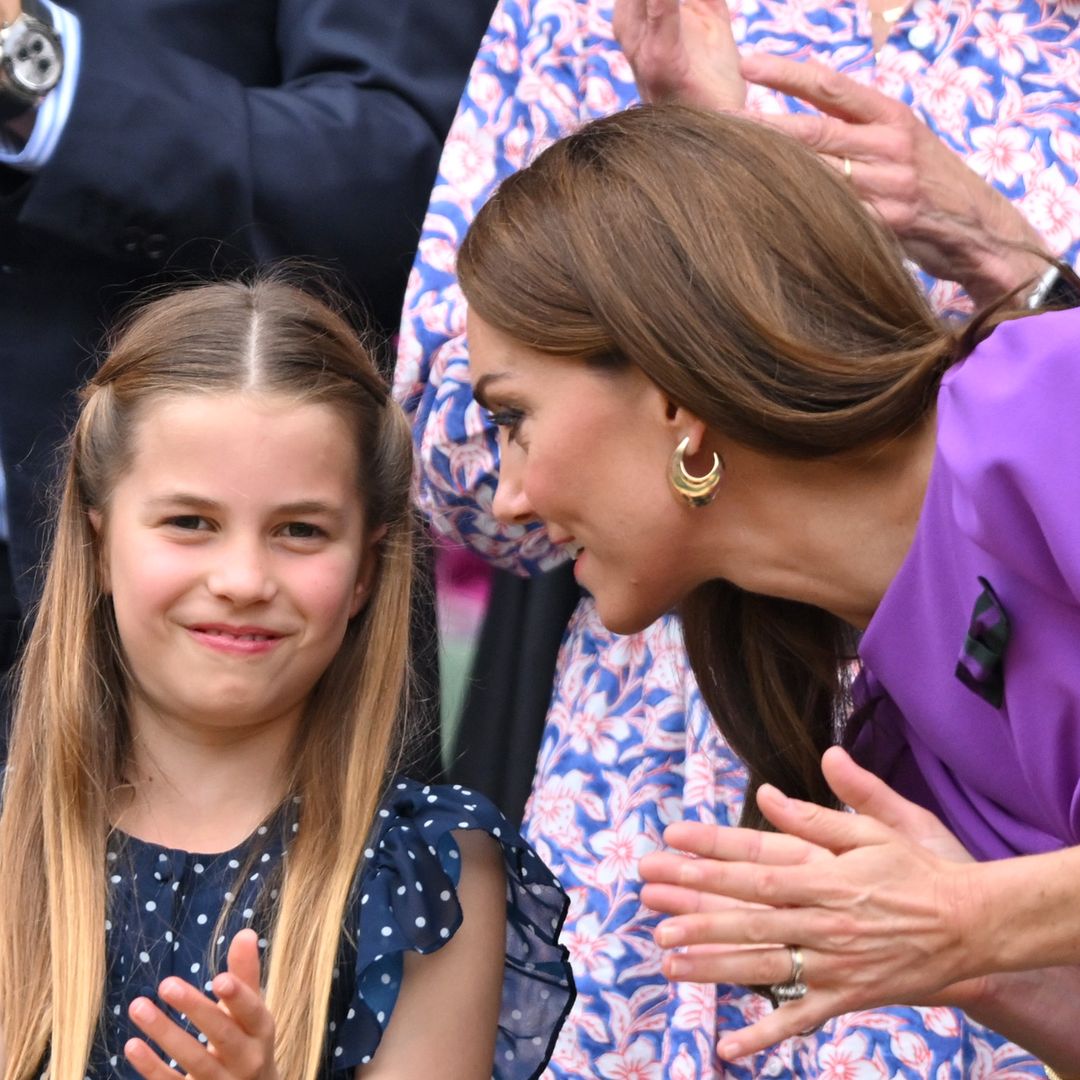Mealtimes with toddlers and small children can be a chaotic affair – all you want them to do is eat a healthy meal, get a vague grip on basic table manners and stay in their seat long enough to finish their food. If only it were that easy!
The Prince and Princess of Wales employ a nanny from the prestigious Norland College to help care for their three children, Prince George, Princess Charlotte and Prince Louis, and, we imagine she teaches them good table manners.
Below, qualified Norland nanny Sarah Carpenter, who is a mum-of-three and co-host of the award-winning parenting podcast The Sleep Mums, shares her tips for more harmonious family mealtimes.
WATCH: Prince Harry and Duchess Meghan's former nanny appears in their Netflix docu-series
How to teach your child good table manners…
"My child throws food on the floor on purpose"
Sarah says: Start as you mean to go on. Using food for games does not promote good habits; eating and food should be fun but not create behaviour which you wouldn’t be happy for your child to demonstrate in a restaurant.
Toddlers and children do not have the same capacity as an adult for sitting at the table. If they are full and finished, a reaction will be to get rid of the remaining food fast and the best way to achieve this is throwing it on the floor.
The first time your child throws a piece of food on the floor ignore it and assume it was an accident. If they repeat this and it’s a purposeful action, say in a firm voice: "Food stays on the table".
Be mindful of staying within your boundaries and repeat this for as long as you are calm and tolerant. Do not snap.
At the point you are becoming frustrated or your little one is no longer eating, I’m afraid the game is over and you have two options: either remove the food completely or offer the child one loaded spoon - this way you are taking control back, letting them know their behaviour was inappropriate but always staying calm throughout the meal.
MORE: Sarah Ferguson's motherhood tip for Princess Eugenie ahead of her baby's birth
The Waleses employ a Norland nanny to help with their children
"Help! My toddler acts like she is allergic to vegetables"
Sarah says: Think outside the box. Most children will put up a bit of a protest if faced with a large plate of green vegetables, so make it a bit more fun and inviting whilst being mindful of table manners.
Small, tiny, pieces of your chosen veg alongside food you know your little one enjoys is fine. Keep things separate to avoid them not wanting to touch the things you know they like.
Don’t force them. Having bits of vegetables on the plate is a start even if they don’t eat them - tolerating them is the beginning.
Use veg in food, like hidden veg pasta sauce, but remember this is just so they eat their vegetables; you also want to have those same hidden veggies visible near the child so they are familiar and when ready, can try them.
Use variety and colour - rainbow snack plates filled with veg are far more inviting. Then take it in turns to roll the dice and count round the plate to the veg you are going to "sniff, lick, bite, bite, bite". A sniff is a huge step for a child so give praise and encouragement if they get this far.
"My little one has ants in their pants and will not stay up at the table"
Sarah says: Children learn by example. We can be so guilty of carrying on with other jobs during children’s mealtimes or jumping up and down ourselves, so before checking them, check you. If you are happy that you are setting a good example then great, however, if not, amend your behaviour first.
Once you are happy, be realistic with your expectations. Toddlers won’t be able to sit at a table for long; if they are fidgety and it’s almost the end of a course, give them an easy meal related task to carry out before coming back to the table.
Use variety. A continuous cycle of food and size appropriate portions will engage them far more successfully than expecting them to eat a portion size fit for a king. Generally, less is more when serving up a portion size which you can guarantee they will finish, encourages praise and keeps their tiny attention.
Asking for more allows a break in the mealtime and sense of achievement rather than a fear of disappointment if they do not manage to finish.
LOOK: 16 cute Easter outfits for baby boys & girls: M&S, John Lewis, Boden & MORE
"By the time my child has brought all their requested toys to the table, there is no room for plates"
Sarah says: Do not be guilty of bringing devices like phones and laptops to the table - it’s our equivalent of a toy. Give children plenty of warning ahead of mealtimes that playtime will be coming to a close shortly.
Tidying up fully before a meal helps children to disengage from one part of the schedule before moving on to the next. If they insist on keeping some special toys out, keep them in another room as seeing them close will be too distracting.
Discuss the toy in question over the meal. This engages the child's concentration and helps to develop imagination and vocabulary, e.g.: "What did T-Rex have for his snack?"
Having a timer can help your little one understand that each section of the day comes to an end and they will get back to their toy soon.
"My child eats pasta with no sauce, for three meals a day, everyday"
Sarah says: Try planning a menu and having pictures so your child knows what is coming. It can help them grow in confidence with food - and get them involved in shopping and food prep too.
The more exposed they are to different options, the more likely they are to try. And eat with them… seeing you be positive about the foods you would like them to try is key.
Do not remove what they love having. A bowl of 'naked pasta' on the table shows them you aren’t lying if you say they can have it once they have explored some new food.
Exploring takes the pressure of - if you ask them to try, they immediately panic about it going in their mouth, however exploring can be talking about colour, shape, texture, testing it to see how easily a fork goes in it and when they are ready, having a go at sniffing it then licking it, then taking a bite.
For more advice on parenting and in particular getting your little ones to sleep, head to Sarah Carpenter and Cat Cubie’s award-winning podcast top ten parenting podcast, The Sleep Mums @thesleepmums or check out their book Sleep Better Baby.










